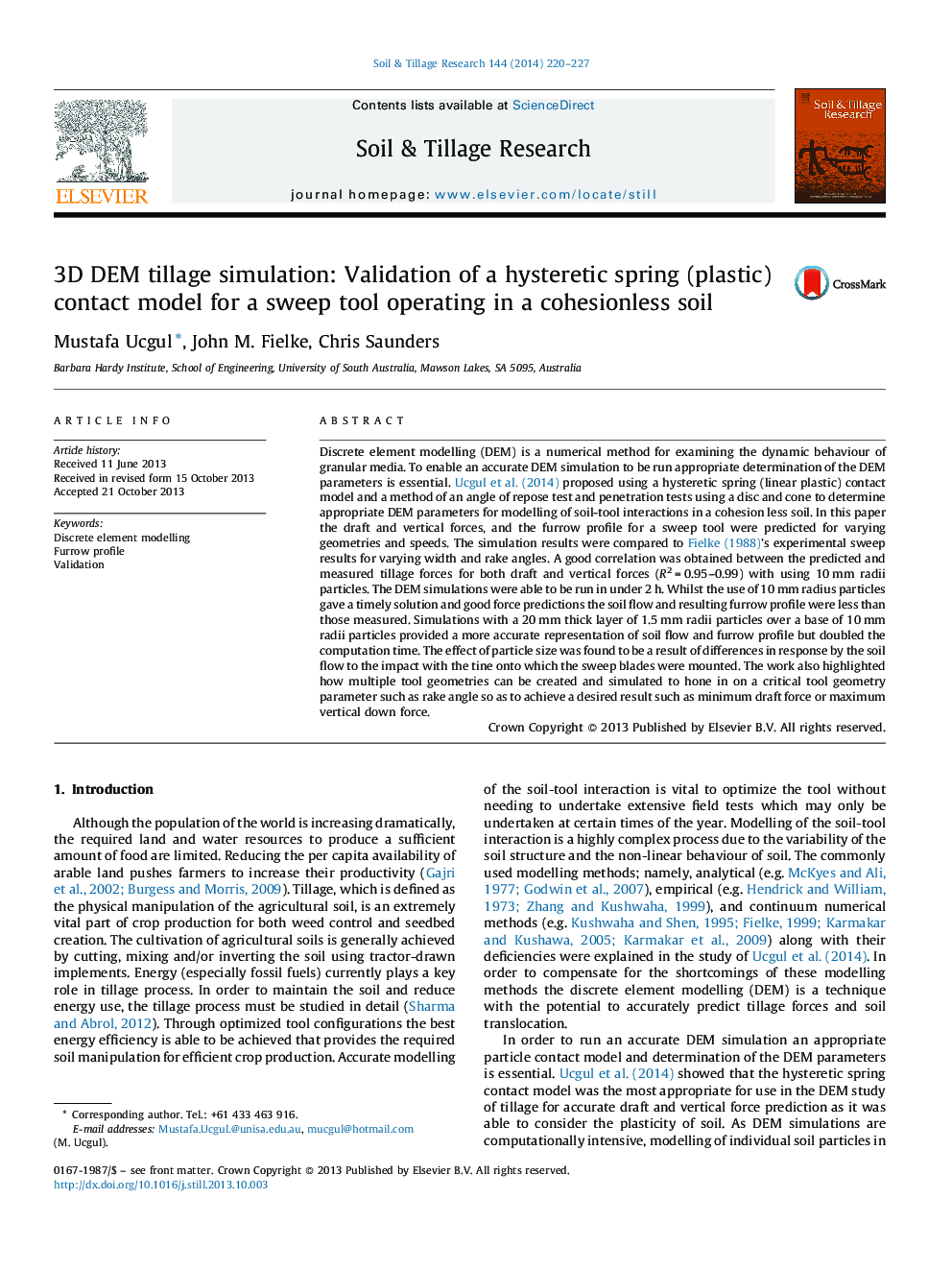| کد مقاله | کد نشریه | سال انتشار | مقاله انگلیسی | نسخه تمام متن |
|---|---|---|---|---|
| 305682 | 513043 | 2014 | 8 صفحه PDF | دانلود رایگان |

• Ucgul et al. (2014)’s DEM parameters can be used to model soil-tool interaction.
• DEM can be used to simulate the furrow profile as well as the tillage forces.
• The tillage forces can be simulated accurately using large particle sizes.
• Smaller particle sizes must be used to obtain accurate furrow profile results.
Discrete element modelling (DEM) is a numerical method for examining the dynamic behaviour of granular media. To enable an accurate DEM simulation to be run appropriate determination of the DEM parameters is essential. Ucgul et al. (2014) proposed using a hysteretic spring (linear plastic) contact model and a method of an angle of repose test and penetration tests using a disc and cone to determine appropriate DEM parameters for modelling of soil-tool interactions in a cohesion less soil. In this paper the draft and vertical forces, and the furrow profile for a sweep tool were predicted for varying geometries and speeds. The simulation results were compared to Fielke (1988)’s experimental sweep results for varying width and rake angles. A good correlation was obtained between the predicted and measured tillage forces for both draft and vertical forces (R2 = 0.95–0.99) with using 10 mm radii particles. The DEM simulations were able to be run in under 2 h. Whilst the use of 10 mm radius particles gave a timely solution and good force predictions the soil flow and resulting furrow profile were less than those measured. Simulations with a 20 mm thick layer of 1.5 mm radii particles over a base of 10 mm radii particles provided a more accurate representation of soil flow and furrow profile but doubled the computation time. The effect of particle size was found to be a result of differences in response by the soil flow to the impact with the tine onto which the sweep blades were mounted. The work also highlighted how multiple tool geometries can be created and simulated to hone in on a critical tool geometry parameter such as rake angle so as to achieve a desired result such as minimum draft force or maximum vertical down force.
Journal: Soil and Tillage Research - Volume 144, December 2014, Pages 220–227